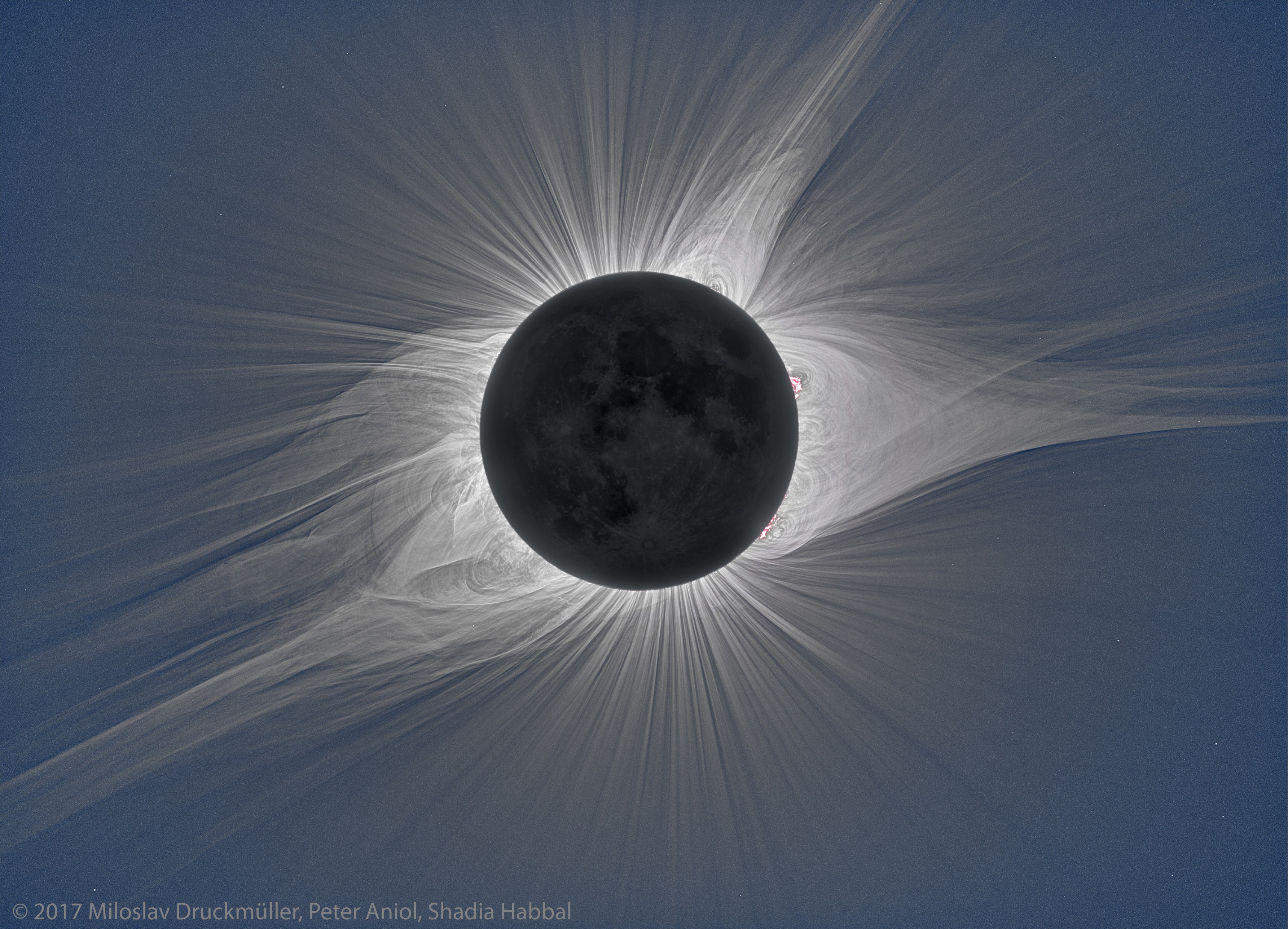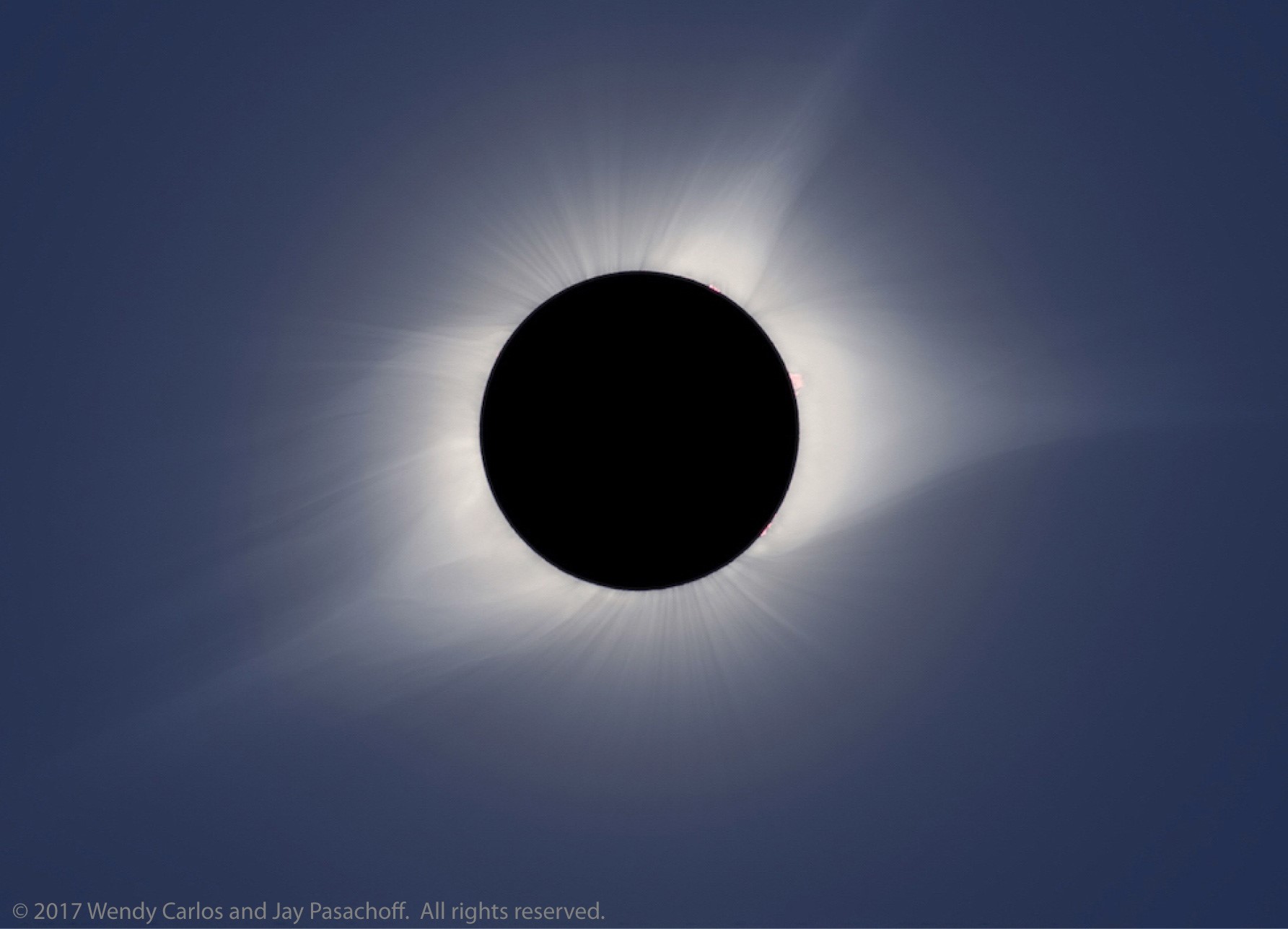This Solar Eclipse Forecast from 2017 Shows What We Still Don't Know About the Sun
Most people's preparations for last year's total solar eclipse involved tracking down protective glasses and booking hotels, but Zoran Mikic and his colleagues had another task on their plate: predicting what precisely the stunning spectacle would look like.
That's because Mikic is a solar scientist at Predictive Science Inc., a company that tackles scientific challenges, including modeling the sun. That involved making about a dozen corona predictions over the past two decades. Mikic told Space.com that, in general, the predictions show both the rise of incredibly powerful computers and scientists' improved understanding of the sun. But it's still not easy, and he and his team members reflect on the process in a new paper published today (Aug. 27).
"We found that sometimes we're more successful than others because it's a very difficult thing to do," Mikic said. "Mostly, I do it personally because I think it's fun and it's something you can relate to that the public's excited about." [The Most Amazing Photos of the 2017 Total Solar Eclipse]
The appearance of the corona during an eclipse is shaped by what's happening in the sun's magnetic field. But that makes timing the prediction a challenge, since the only satellite that provides data about that magnetic field just sees the side of the sun facing toward Earth. But the sun, like the Earth, is spinning, about once every 27 or so days.
That means that for the edge of the sun that has just become visible from Earth, scientists mostly must rely on old data, taken before the region spun out of sight. The further in advance you want to predict what will happen on the sun, the more data you have to rely on that was gathered before it last slipped out of sight. "If you wait too long, then the magnetic field you're using is too old," Mikic said.

But the team also needs time to run the complex computer modeling and analyze the results. They have found that between seven and 10 days before the eclipse is the best time to predict the corona. "You're fighting against time, really," Mikic said. Last year, the team made their prediction around Aug. 15 for the Aug. 21 eclipse.
Get the Space.com Newsletter
Breaking space news, the latest updates on rocket launches, skywatching events and more!
The process was particularly fraught because of some large active regions of the sun that the team tracked through July 2017. Those pockets were joined by sunspots, relatively cool knots in the magnetic field, which started appearing in the days between the prediction beginning and the eclipse occurring. "We were a little concerned that that would throw off our prediction," Mikic said. (Those sunspots ended up producing some stunningly large solar flares the next month.)
Those sunspots didn't end up being a problem because of their location. "If they're on the face of the sun that we see, sort of near the disk's center, they aren't going to affect the limbs," the edges of the sun as seen from Earth, from which the eclipse corona streams out, Mikic said. "If something happens away from the limbs, it won't affect what you'll see during an eclipse as much."
But the team isn't done after they create the prediction — they also need to test that prediction against what people actually observe during the eclipse. "Comparing with observations tells you a lot about when the model fails and what could be going wrong," Mikic said.
In general, he was fairly satisfied with the team's prediction, although they missed one large streamer because of magnetic field data that was too old. Of course, crunching the data wasn't the first time Mikic saw what really appeared during the eclipse — he was on the ground in Oregon for the big event.

But it's difficult to leave work at the office when the eclipse begins. "You certainly have the prediction in your mind," Mikic said. First, you have to quickly orient the sun in your head to match the way it was modeled; then you can start lining up features in the corona, particularly the large, pointed helmet streamers, as well as the smaller loops called prominences, he said.
Mikic said the prediction process isn't just about getting a sneak peek before the celestial show starts — it's also an important tool for scientists to check how well they truly understand what's happening on the sun.
"It's sort of a validation of the whole environment of the corona, not just on the limbs or what's facing Earth, but these models will tell you what's going on everywhere in the sun," Mikic said. "It's unlikely you're going to get one part of this right and the rest not; it's all kind of one thing."
The research is described in a paper published today in the journal Nature Astronomy.
Email Meghan Bartels at mbartels@space.comor follow her @meghanbartels. Follow us @Spacedotcom, Facebook and Google+. Original article on Space.com.
Join our Space Forums to keep talking space on the latest missions, night sky and more! And if you have a news tip, correction or comment, let us know at: community@space.com.

Meghan is a senior writer at Space.com and has more than five years' experience as a science journalist based in New York City. She joined Space.com in July 2018, with previous writing published in outlets including Newsweek and Audubon. Meghan earned an MA in science journalism from New York University and a BA in classics from Georgetown University, and in her free time she enjoys reading and visiting museums. Follow her on Twitter at @meghanbartels.









